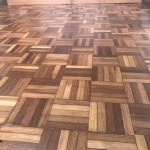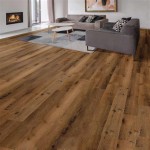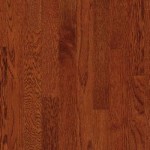Choosing the Right Laminate Flooring Underlay Thickness
Laminate flooring has become increasingly popular due to its durability, affordability, and ease of maintenance. However, the success of a laminate flooring installation hinges not only on the quality of the flooring itself but also on the underlayment used beneath it. Underlayment acts as a crucial buffer between the subfloor and the laminate planks, providing a multitude of benefits, including sound dampening, moisture protection, and improved comfort. One of the key factors to consider when selecting underlayment is its thickness.
The thickness of laminate flooring underlayment is a crucial factor that significantly impacts the overall performance and longevity of your laminate floor. An appropriate thickness ensures proper support, reduces noise levels, and enhances the overall comfort of your flooring. However, choosing the right thickness can be a daunting task, as various options are available, each with its unique advantages and disadvantages.
Understanding the Benefits of Underlayment Thickness
The primary function of laminate flooring underlayment is to provide a smooth and even surface for the laminate planks to rest upon. A thicker underlayment, typically ranging from 3/16 to 1/2 inch, offers several advantages:
Enhanced Sound Reduction:
Thicker underlayment acts as a sound barrier, effectively absorbing noise from foot traffic and other sources. This is particularly beneficial in apartments, multi-level homes, or areas where noise reduction is desired.Improved Comfort:
A thicker underlayment creates a more cushioned and comfortable walking surface. This enhanced comfort is especially noticeable in high-traffic areas or rooms where you spend a significant amount of time standing.Increased Subfloor Leveling:
Some underlayments, especially foam-based options, can help to even out minor imperfections in the subfloor, creating a more stable and even surface for the laminate planks.Enhanced Moisture Protection:
Thicker underlayments often offer more robust moisture resistance than thinner options. This is particularly important in areas prone to moisture, such as basements or bathrooms.
Factors Influencing Underlayment Thickness Selection
Several factors should be considered when determining the appropriate thickness for your laminate flooring underlayment:
Subfloor Condition:
The condition of your subfloor is crucial. If your subfloor is uneven or has significant imperfections, a thicker underlayment is recommended to level out the surface and provide a stable foundation for your laminate floor.Noise Reduction Requirements:
If noise reduction is a primary concern, opting for a thicker underlayment with higher sound absorption properties is essential.Desired Comfort Level:
The desired level of comfort is a subjective factor. If you prefer a softer, more cushioned walking surface, a thicker underlayment is recommended.Installation Method:
Some underlayments are designed for specific installation methods, such as floating or glue-down installations. Ensure that the underlayment you choose is compatible with your chosen installation method.Laminate Flooring Thickness:
The thickness of your laminate flooring can impact the overall height of your floor after installation. A thicker underlayment may increase the overall height, which may be a concern in doors or transitions.
Types of Underlayment and Thickness Options
Various underlayment options are available, each offering distinct characteristics and thicknesses. Common types include:
Foam Underlayment:
Foam underlayment is a popular choice due to its affordability and excellent sound absorption properties. It is available in various thicknesses, typically ranging from 3/16 to 1/2 inch.Cork Underlayment:
Cork underlayment is known for its natural properties, providing a comfortable and sound-absorbing surface. Cork underlayment typically comes in thicknesses ranging from 1/8 to 3/8 inch.-
Fiberboard Underlayment:
Fiberboard underlayment is a rigid and durable option that can be used under laminate flooring. It typically ranges in thickness from 1/8 to 1/4 inch and is suitable for leveling out slight subfloor imperfections. -
Rubber Underlayment:
Rubber underlayment offers excellent sound and moisture absorption properties, making it ideal for areas prone to moisture or high noise levels. It typically comes in thicknesses ranging from 1/8 to 1/4 inch.
Selecting the appropriate laminate flooring underlayment thickness is crucial for achieving the desired comfort, noise reduction, and overall performance of your laminate floor. By carefully considering the factors discussed above, you can ensure that you choose the right underlayment for your specific needs.

How To Choose Underlay For Laminate Flooring Blog Floorsave

What Is The Best Underlay For Laminate Flooring Or Engineered Wood Floor

How To Choose Underlay For Laminate Flooring Blog Floorsave

Quietwalk 100 Sq Ft 3 X 33 Mm Underlayment With Sound And Moisture Barrier For Laminate Engineered Floors Qw100b1lt The Home Depot

Underlayment Buyer S Guide

Best Luxury Vinyl Flooring Allfloors Trade Centre

How Thick Is Laminate Flooring And Underlay Combined

How To Choose Laminate Flooring Underlay Tile Merchant

What Is The Best Underlay For Laminate Flooring Or Engineered Wood Floor

What Is The Ideal Laminate Underlay Carpet
Related Posts








